Features
DANSKROCKSAMPLER
by Julian Cope, 01/07/2004ce

This DANSKROCKSAMPLER was compiled by Julian Cope, in May 2004CE, for the sole purposes of shining a light on lost Danish music, and was never released on any label.
Listen to DANSKROCKSAMPLER (MP3 Stream)
- SAVAGE ROSE - Ride My Mountain (5.42)
- YOUNG FLOWERS - And Who But I Should Be (5.40)
- BURNIN’ RED IVANHOE - Ivanhoe I Brodbyerne (3.56)
- ALRUNE ROD - Du Taler Og Si’r (7.45)
- POVL DISSING - Tingel-Tangelmanden (10.25)
- YOUNG FLOWERS - The Moment Life Appeared (2.16)
- SAVAGE ROSE - A Trial in our Native Town (7.10)
- BURNIN' RED IVANHOE Marsfesten (5.35)
- ACHE - The Invasion (6.01)
- ALRUNE ROD - Hej Du (15.05)
- STEPPEULVENE - Itsi-Bitsi (4.54)
Note: My interest in Danish rock’n’roll began by accident in early ’99, when I paid 20 pence for a perfect copy of The Savage Rose’s wonderfuelled instrumental LP DODENS TRIUMF, at Melksham’s big Dorothy Hospice charity shop, about 12 miles from my home. This album was so unlike the Savage Rose singles I’d heard that I wondered how they’d got to such a place. However, a little research soon revealed that the album had been been massive in Denmark but unknown in the rest of the world. As I travelled through Denmark a few times during the next few years’ research into THE MEGALITHIC EUROPEAN, I made friends with a hip publisher called Ole Knudsen, whom I hassled immoderately to help me navigate the uncharted waters of Danish psychedelia and progressive music. To the Danes I send salutations and congratulations for the immaculate state of their beautiful islands, and to Ole Knudsen I dedicate this introductory article with many thanks.
When U Ragnarock with me
Whilst the Swedish late ‘60s underground scene has of recent years been well excavated, so that such heavyweights as BoAnders Persson’s legendary Parson Sound (and their various alter egos Harvester and Träd, Gräs och Stenar) have now been joined by such previously lost souls as Archimedes Badkar, Algarnas Tradgard, etc., the equivalent Danish scene hardly more than a stone’s throw across the watery Oresund has remained severely unsung. That this is a big hole in rock’n’roll will become apparent when you hear this DANSKROCKSAMPLER for the first time, for the groups showcased herein had a raunch and invention on a par with the best contemporary British and American bands. Indeed, like the finest Japanese and Krautrock bands, the only notably obscure elements in all these Danish head sounds were their lyrics and their geographical location.
But whilst Ache, Alrunes Rod, Young Flowers and the Tim Hardin/Jacques Brel-styled Povl Dissing carved out successful careers in the Danish music scene, only the Copenhagen-based Burnin’ Red Ivanhoe found their records released in Britain, and even then it was within the confines of John Peel’s relatively obscure Dandelion label. The Savage Rose, however, went several steps further, gaining a major American contract with RCA and playing alongside Miles Davis and James Brown at the 1969 Newport Jazz Festival. But their subsequent refusal to play out the so-called American Dream (moreover biting the hand that fed them by playing for the Black Panthers and the P.L.O.) and the band’s dignified return to homeland glory acts as a perfect Danish metaphor. For this huge archipelago of low-lying islands, so often considered by the Danes to be relatively meagre territories, are rich and fertile lands that have long been inhabited by a culture strong in moral fibre, tenacity and determination, and a singular desire to do their own thing. So the cultural revolution of the 1960s, though inspired by the beat of American and British rock’n’roll, was soon appropriated by the Danes and used for their own ends.
Denmark’s failed attempt to remain neutral during WW2 saw its islands invaded by the Nazis for use of its Baltic ports and its high yield agricultural lands, appropriated to help feed the swarms of the Third Reich. And so post-war Danes were in no mood for further invasions even if it was to have been only of the cultural variety. Their post-war governments built up the most successful welfare state in Europe and Danes prided themselves on their open-mindedness and egalitarian attitudes. Like jazz before it, the coming of rock’n’roll culture was embraced not only for its sounds, but because it emanated from Afro-American culture and symbolised both freedom AND newly found freedom. It was the mystic Johann Gottlieb Ficht who had so percipiently commented:
‘To be born free is nothing – to become free is heavenly.’Empathising with the Afro-American freedom riders on the buses across the southern states of America, the Danes danced and hollered in the joys of this new freedom from the Nazi tyranny. And from the earliest days of rock’n’roll, all of Denmark’s islands resounded with the sounds of the rock. From Zealand in the east to the great landmass of Jutland in the west, via Fyn, Lolland, Falster, and Langeland, bizarrely-named Danorockers plied their guitar-and-sax fuelled trade every weekend. You thought the Swedes had the monopoly on weird names after you read about the Mecki Mark Men? Well think again, suckers! Throughout the late ‘50s and into the mid-60s, town hall and local ballrooms from Skaggerak to Copenhagen advertised Danish rock’n’roll bands and beat groups with such unlikely names as Ola & the Janglers, Ole & the Others, Pils & his Pilsners, Little Freddie & His Rockboys, The Stamping Bricks, Ranthe-Birch’s Smashband, The Rookeys, Melvis Rockband (who later became The Medley Swingers because they’d spent so much money on having their shirts each embroidered with a large capital ‘M’), The Dandy Swingers, The Clidows, The Five Danes, The Teenmakers, The Hitmakers, The Cliff Richard-inspired Cliffters (!), The Telstars, Sir Henry & His Butlers (who featured their own stripper!) and the seven futuristic proto-Numanoids of X-Group! Eventually, these gave way to worthy humourless early blues bands such as Hurdy Gurdy, Delta Blues Band, the Beefeaters, the Blues Addicts and Gasolin’, many of whom remained on the scene during and after the soon to be forthcoming psychedelic era...
Steppeulvene & the Student Riots
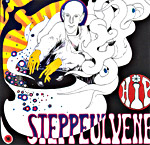
Steppeulvene - HIP
Young Flowers, Traffic & the Festival of the Flower Children

Young Flowers
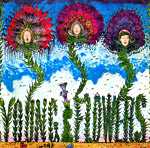
BLOMSTERPISTOLEN
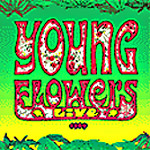
LIVE 1969
By 1968, Young Flowers had hit the Album charts with BLOMSTERPISTOLEN ‘Flower Gun’) and the single Top 30 with the 45 ‘Oppe I Traet (Up in the Tree)’, whose excellent lyrics opened with the line: ‘Up in the tree/I’m damned well sitting/And I’m far away’, continuing with such classy psychedelic allusions as ‘the darkness is dark’. However, this fairly generic piece of lyrical bunkum in no way reflected Peter Ingemman’s lack of taste, and he was genuinely inspired in his decision to use several Walt Whitman poems as the lyrical base for many of the subsequent Young Flowers songs. I’ve included their magical delivery of Whitman’s ‘The Moment Life Appeared’, which here becomes Donovan-ised and incredibly charming. The other track I’ve chosen is their adaption of Walt Whitman’s ‘And Who But I Should Be’, which comes from their second LP YOUNG FLOWERS NO. 2. The blues side of Young Flowers is typical of this period and does nothing to smoke my pole. But then again whenever I’ve listened to this period of rock’n’roll from Greece’s Socrates Drank the Conium to the relentlessly harrowing and empty Cuby & the Blizzards in the northern Netherlands, they all really burn it up until they inevitably start ‘imposing’ their versions of the blues upon us. Maybe only real black blues men had the un-Romanised body rhythms to pull off such raunch. However, when Young Flowers’ unleashed their loose freakout style, it was totally full on and extremely appealing, especially such tracks as the Ruckzuck-period Kraftwerk-meets-Neu! Klaus Dinger-style phased drumming of ‘April ‘68’; on the Barrett Floyd-styled ‘Overture’; and on their eleven-minute flute-and-sax-assisted ‘Kragerne Vender’ - a self-styled monolithic ‘freeform jam session’ [sic] which closed YOUNG FLOWERS NO. 2. In the early 1970s, Peter Ingemann did a Chas Chandler and went on to become a successful rock’n’roll manager as we as becoming part of the hugely successful Skousen & Ingemann duo, whose LPs were massive. Unfortunately, the sole LP of which I’ve a copy is 1971’s HERFA HVOR VI STAR (‘From Where We Stand’), which is really quite bland and flute heavy, barely computing with the malevolent contortions hurled about by Young Flowers just two years earlier.
Burnin’ Red Ivanhoe

(LEFT TO RIGHT) Ole Fick, Bo Thrige Anderson, Kim Menzer, Jess Stæhr, Karsten Vogel
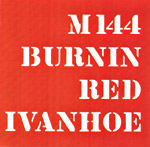
Burnin' Red Ivanhoe M-144
The Savage Rose
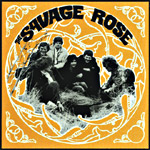
SAVAGE ROSE's 1st LP
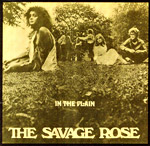
IN THE PLAIN
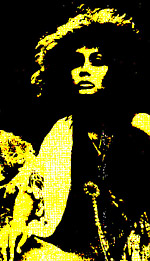
Annisette in 1968
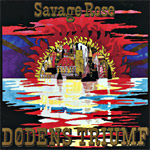
DODEN'S TRIUMF
‘So long, Ludwig, I love you, but I need to move on now and join the living.’
And so The Savage Rose was born. Thomas persuaded his younger poet/film maker brother Anders to buy a red Farfisa organ and hooked up with four other musicians, including the amazing singer Annisette, whose extraordinarily over-the-top proto-Bjork/post-Edith Piaf sexual delivery would later be described by Lester Bangs as ‘Grace Slick at 78 RPM’ and ‘Minnie Mouse on a belladonna jag’1 Nowadays known as ‘The Yellow Album’, that first self-titled LP was a beautiful but mainly too innocent/too simplistic take on what The Savage Rose would come to represent. Too often, Annisette had to adopt Anders Koppel’s male lyrical persona for songs such as the 45 ‘A Girl I Knew’. However, the release of the second album IN THE PLAIN revealed the true colours of this psychedelic three-keyboard player Spectorish onslaught. Imagine Japan’s euphoric Big Brother-esque septet The Flowers if they’d been able to write their own songs… or perhaps Guy Stevens’ wildest ‘River Deep, Mountain High’ aspirations written by idealistic anti-Vietnam post-Frisco refuseniks, topped with the most helium-voiced mid-orgasming female singer this side of early Kate Bush, and yooz approaching the heights that The Savage Rose occasionally attained.
I have included their almost 6-minute epic ‘Ride My Mountain’ to illustrate these giddy heights, for theirs was not only transcendant rock’n’roll, but Savage Rose also bucked all traditions by taking Spector’s 3-minute rush and re-contextualising it within The Doors’ first 3LPs (‘Light My Fire’ via ‘Five- To One’ through to ‘Unknown Soldier’) to sustain a flat out Rock Operatic burn up I ain’t never heard elsewhere then or since. The other track that I knew had to represent The Savage Rose herein was their 7-minute otherworldly Dylanesque death ritual ‘A Trial in Our Native Town’. Here, they again approach a kind of Scando-Germanian doom trudge with a Doors-meets-early Siouxsie ‘what precisely the fuck is going on?’-ness that is both disturbing in its RYAN’S DAUGHTER rawness and delightful in its WHICKER MAN-meets-SEVENTH SEAL cinemascopic vastness. Imagine Iggy Pop and James Williamson’s proto-Suicide take on Dylan’s ‘Ballad of Hollis Brown’, slow it down some and play it as a backdrop to a film of the German Army leaving Moscow and you’re getting somewhere close. I include here the entire libretto, not for what it reveals, but for what it conjures in the mind of the listener:
‘A leather strip around your hand
The great landowner whom you kissed
The cries out from the battlefield
Tell me, where did you come from?
Coming right through to the end
You don't want to resent
The poor souls that brought you here
The landscape behind your fingerprints
You have walked between snakes in the plain
People everywhere greeted you in vain
Steal my heart, baby, just roll on
Just roll on from your native town
They've been haunting you and drinking
They've been so careful thinking
That you shouldn't be alone here
That you belong to them
There's the drummer, breathing the air
There's the man, who brought the chair
Where you should be seated
Within the doors of your home
You sit down in this painted chair
You're tired, they don't care
Oh, come out from your hidden place
They want to kiss you, want to be with you
The fields are heavy with dust
Remember the smell from your City lost
The chain around your naked foot
Tell me, what do you do now?
You better wait until past midnight
Tie your mind to me waiting outside the prison
With the leather strip from your hand
Wait, I'll come to hold you tight.’
With their new American presence, including that show with James Brown and Miles Davis at the 1969 Newport Jazz Festival, The Savage Rose took on two heavyweight US managers who had no understanding of their idealism. The next two years saw them treading water with three mainly average LPs TRAVELIN’, YOUR DAILY GIFT, REFUGEE, the last two being produced to little effect by the Rolling Stones’ Jimmy Miller. In this atmosphere of stasis, Thomas Koppel was asked to write a ballet score for the Royal Ballet’s forthcoming DODENS TRIUMF. That Koppel had never intended to entirely exclude his classical career is evidenced by the success of his opera THE STORY OF A MOTHER, which he had written aged nineteen, and which was still being performed at The Royal Opera. With little record company enthusiasm for the project and half of the band alienated from this all-instrumental project, Koppel single-mindedly approached the score as though it were his most important ever work. And so, when Polydor’s first pressing of the LP was limited to just 500 copies, Koppel’s initial anger soon gave way to delight as the record went on to be their biggest ever album, selling over 250,000 copies. As my first introduction to The Savage Rose, the record still hold a great place in my heart, though there’s clearly no place for any LP track within the confines of this brief DANSKROCKSAMPLER situation. However, with hindsight and a little research, it’s clear that Thomas Koppel had always seen The Savage Rose as a potential vehicle for such music as that contained within the grooves of DODENS TRIUMF, as evidenced by the 8-miuntes long mood piece ‘Tapiola’ on 1969’s YOUR DAILY GIFT.
The success of DODENS TRIUMF took its toll on the original line-up of Savage Rose, which gradually diminished from here on in, as Thomas Koppel and Annisette Hansen took over the public face of the band, indeed as they have continued to do right up to the present day. I haven’t attempted to keep up with their muse, but they clearly retain an idealism that keeps them as adored in modern Denmark as they were thirty-five years ago. Listening to the two tracks included on this DANSKROCKSAMPLER, I’m convinced that you will feel driven to further excavate their enormous (and enormously thorough) canon of work.
Povl Dissing
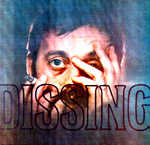
DISSING
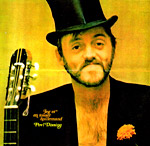
JEG ER EN TOSSET SPILLEMAND
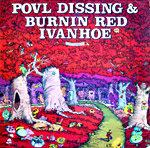
SEKS ELEFANTSKOVCIKADEVISER
I have included herein SEKS ELEFANTSKOVCIKADEVISER’s very best and most obvious representative, the strung out ten-minutes-plus of ‘Tingel-Tangelmanden’, whose very name conjures up the ancient and orgiastic sexual rites that were so slow to be stamped out in early Christian Scando-Germania.2 The surpressed wa-voodoo of the Lokian guitar riff comes across like the three pronged attack of Fleetwood Mac’s Jeremy Spencer/Peter Green/Danny Kirwan line up re-jigging the ST. STEPHEN LP. Moreover, the later stages of this epic piece drop down into a dark northern forest of sonic emptiness, as Dissing’s dissonant groanings retreat and a malevolent blackness takes over. The lyrics of this song, which had first appeared in a far less developed state on Burning Red Ivanhoe’s own album M144, appear to be strings of charming non-sequiters or even streams of consciousness. However, as I know nothing of the occultural roots of the songwriters, other than their having originated from a free jazz background, I may be severely underestimating the codes within these lyrics. Although Burning Red Ivanhoe’s own take on ‘Tingel-Tangelmanden’ sounds far less psychedelic than this marvellous Dissing version, their dual/tracked vocals are still highly charming and a lot like Syd Barrett’s declaimed artless vocals on ‘Octopus’.
Ache

Ache on their hoj
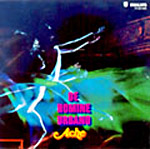
DE HOMINE URBANO
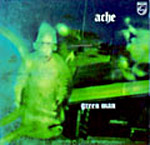
GREEN MAN
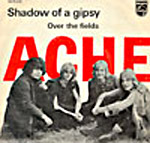
SHADOW OF A GIPSY 45
I much prefer the more song heavy second LP GREEN MAN for its strangely elegant take on PAWN HEARTS’ ‘Man-Erg’-period Peter Hammill, which much better sums up the loss of 1960s idealism and the subsequent ghetto-ising of the underground rock scene. ‘Shadow of a Gypsy’, which opens side two, best illustrates this ‘Man-Erg’ obsession and was a massive hit in France. Unfortunately, the GREEN MAN LP closes with yet another disappointing heavy version, this time of the Beatles’ ‘We Can Work It Out’. Strangest of all, though, is that the Hammillesque lead vocal throughout this record sounds not Danish but like a typically well-spoken English Northerner! Sometimes when travelling in that geographically obscure area of south Jutland, Schleswig-Holstein and the most northerly parts of the Netherlands, I have felt like I’m tripping on acid when - on overhearing local conversations that sound exactly like people from the English north Midlands – I’ve still been unable to understand a single word spoken! Ache occasionally gives me this same psychedelic and appealingly disorientating feeling of alienation in familiar sounds. The biggest problem here is picking a piece of music that best sums up the Ache sound, as you really need a full LP side to get where they’ze coming from. After much humming-and-hah’ing, I settled on ‘The Invasion’ because its mood best captures the fury and the Scandinavian doom as well as copping the superb vocal melody from The Zombies’ ‘Beechwood Park’, on their lost Mellotron 400-classic ODESSEY & ORACLE.
Alrune Rod
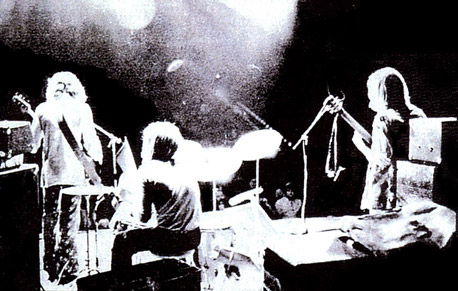
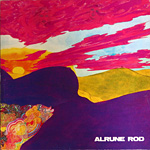
ALRUNE ROD's 1st LP
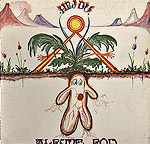
HEJ DU
But it’s within the grooves of those first two Alrune Rod LPs, the self-titled debut of ’69 and the magnificently spacey HEJ DU (‘Hi You’), that the band really stretched the cosmic envelope. Both records still exist entirely in their own space and, moreover, don’t really touch too much on the sounds that their contemporary Danish brethren were dishing up. Starting out as a staring-at-the-floor quartet of super longhairs, the Alrune Rod quartet featured Giese (guitar & vocals), Kurt ‘Pastor’ Ziegler (organ, piano), Claus From (drums), being led by singer/bass player Leif Roden, who wrote and sang most of their thundering organ-heavy doomy ragnarock like some Skogsnuffar from Skaggerak in an anorak sniffing smack from a rug on a rock. These Danish cosmic rockers created an expansive two-tracks-per-side of-each-LP edge-of-space sound somewhere between early Pink Floyd, an emptier Arthur Brown’s Kingdom Come, and PAWN HEARTS-period Van Der Graaf Generator, the latter especially on the quarter-of-an-hour long descent-into-hell known as ‘Rejsen Hjem’, which closes their first LP. Its three-minute-long ever ascending and accelerating introduction and Hamillesque vocals are the most instant sounds that these subtle doom academics ever achieved on this first LP. Everything is either propelled or anchored by Leif Roden’s bass, which even kicks into a raga-styled cross between ‘Paint it Black’ and The Doors’ ‘Not to Touch the Earth’ at one point.
Eighteen months later however, their sound had been augmented by a second drummer with the immaculate name of Karsten Host, pushing their heavy range further but into far more obviously riff-orientated territory than before as Leif Roden’s massive ‘Perlesoen’ enveloped the whole of side two of their second LP HEJ DU. Still Hammill influenced vocally, the album opened with the seven minute ‘Du Taler Og Si’r’ before unleashing the fury of the Van Der Graaf-styled title track in its full quarter-of-an-hour long splendour.
I have within this DANSKROCKSAMPLER included all of side one of this second LP HEY DU, so pretty please give this enormous track your fullest attention, for it is extremely essential rock’n’roll and a massive sonic addition to the psyche of your un-average Forward-thinking Motherfucker. ‘Tis only a pity that the whole of side two couldn’t get squeezed in as well for verily it swallows my golly.
By 1972, their third LP ALRUNE ROCK, the band had taken on an augmented and changed line-up and the spacey sound had started to take on far more defined song structures. Geise’s atmospheric guitar playing had been replaced by Ole Poulsen and the mighty organ of Pastor Zeigler had been dumped in some Langeland fjord, to be replaced only by guest percussionaists and flautists But even this record retains a delightfully Traffic-esque Yippie squawk about it that would be massive had it been recorded by an English or American rock’n’roll band. Alrune Rod is possibly the most unsung of all this Danish scene, for they have a certain future place awaiting them in the hearts of Vertigo Swirlheads, Ohr Records Obsessives and Pink Island Completists throughout the bedroom scenes across Britain, America, Japan and Europe.
In Conclusion
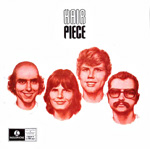
Hair's sole LP PIECE
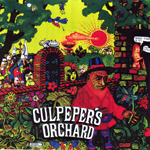
CULPEPER'S ORCHARD
By 1971, when Danish heavy rock was giving way to such progressive bands as Alrune Rod, Ache, the Yes-played-by-jazzers Midnight Sun, Day of Phoenix, Secret Oyster and The Old Man & the Sea, the student protests which had continued since the late 1960s were beginning to take effect, and eventually led to the proclamation of a ‘Free State of Christiania’ on a military base on the outskirts of Copenhagen. Operating along the same lines as the Berlin Eins commune of three years previous, this ‘Social Experiment’ attracted over 1,000 people who agreed to take up residence in abandoned barracks under communal rules. The liberal government accepted the experiment and even allowed Christiania to fly its own flag as a partly self-governed area of Copenhagen. Freetown Christiania, as the commune also became known, was accessible through only two gates and petrol driven vehicles were entirely banned. The commune’s main drag took the name Pusher Street as drug dealers took up residence at permanent stalls that sold grass and hash openly and cheaply. And although Christiania has stared at possible extinction for the past decade, its tenuous survival these past thiry-one years shows us, like the continued 21st century success of Savage Rose, that the Utopian spirit of the Danish 60s scene was a cut above the rest of those scenes spawned by Rock’n’roll, the Freedon Riders and Albert Hoffman’s accidental bicycle ride. I only hope that this article creates a deluge of new Danish information, for the music I’ve heard so far does more than a job on my frontal lobes – verily, it trepanneth the bone from mah skullington!
FOOTNOTES:
- LESTER BANGS, Rolling Stone (October 18th, 1969)
- Evidence for the Tingel Tangel having once been a ritual phenomenon all across the northern lands can be seen in the trial of the Forfar witches in the 17th century.
Confessions from the four hanged women stated that they had drunk beer with the devil, whom some of them had kissed, whilst ‘singing altogether a song called Tinkletum Tankletum’.
Selected Album Discography
Alrune Rod ALRUNE ROD (Sonet 1969)
Alrune Rod HEJ DU (Sonet 1971)
Alrune Rod ALRUNE ROCK (Sonet 1972)
Ache DE HOMINE URBANO (Philips 1970)
Ache GREEN MAN (Philips 1971)
Burnin’ Red Ivanhoe M144 (Sonet 1969)
Burnin’ Red Ivanhoe BURNIN’ RED IVANHOE (Dandelion 1970)
Povl Dissing DISSING (Sonet 1969)
Povl Dissing JEG ER EN TOSSET SPILLEMAND (Sonet 1970)
Povl Dissing SEKS ELEFANTSKOVCIKADEVISER (Sonet 1971)
The Savage Rose THE SAVAGE ROSE (Polydor 1968)
The Savage Rose IN THE PLAIN (Polydor 1968)
The Savage Rose TRAVELIN’ (Polydor 1969)
The Savage Rose REFUGEE (Polydor 1971)
The Savage Rose YOUR DAILY GIFT (RCA 1971)
The Savage Rose DODENS TRIUMF (Polydor 1972)
Steppeulvene HIP (Metronome 1967)
Young Flowers BLOMSTERPISTOLEN (1968)
Young Flowers YOUNG FLOWERS NO. 2 (1969)
A Discography of Notable Danish 45s
Alrune Rod ‘Tael Aldrig I Morgen Med’ (Sonet 1969)
Ache ‘Shadow of a Gypsy’ b/w ‘Over the Fields’ (Philips 1971)
Burnin’ Red Ivanhoe ‘De Danske Hjertvarmere’ EP (Sonet 1969)
The Savage Rose ‘Girl I Knew’ (Polydor 1968)
The Savage Rose ‘Evening’s Child’ (Polydor 1968)
The Savage Rose ‘Long before I Was Born’ (Polydor 1968)
The Savage Rose ‘Sunday Morning’
The Savage Rose ‘Revival Day’
Young Flowers ‘Oppe I Traeet’ (1968)

 DETROITROCK SAMPLER
DETROITROCK SAMPLER HARDROCK SAMPLER
HARDROCK SAMPLER Li Jianhong
Li Jianhong The Routes
The Routes Chairmen Of The Board
Chairmen Of The Board Evil Acidhead
Evil Acidhead Henry Wolff & Nancy Hennings
Henry Wolff & Nancy Hennings Silver Apples
Silver Apples OMD
OMD XTC
XTC Fleetwood Mac
Fleetwood Mac Fleetwood Mac
Fleetwood Mac Van Morrison
Van Morrison Vsevelodon the Bigot Nest (Vsevelod and the Big Nest)
Vsevelodon the Bigot Nest (Vsevelod and the Big Nest)